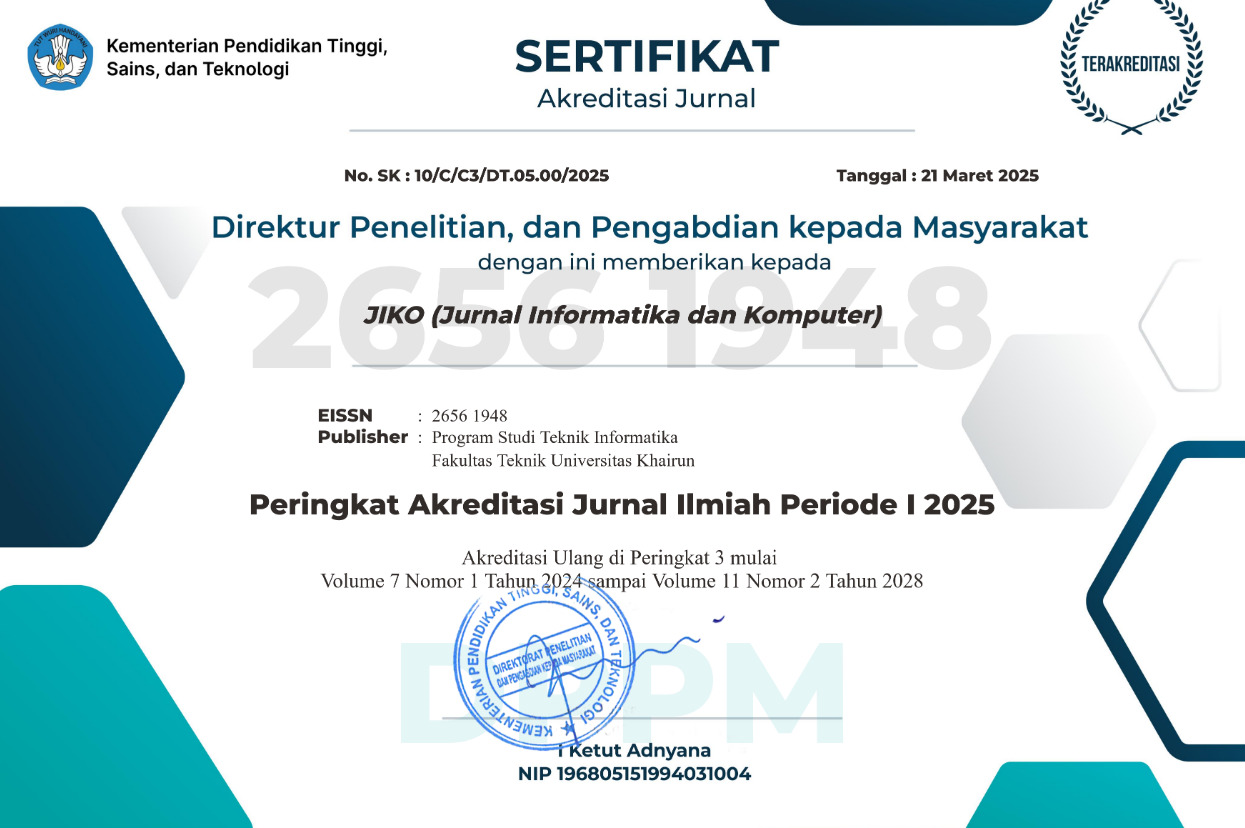Multiclass Email Classification by Using Ensemble Bagging and Ensemble Voting
Abstract
Full Text:
PDFReferences
X. L. Wang and I. Cloete, “Learning to classify email: A survey,†2005 Int. Conf. Mach. Learn. Cybern. ICMLC 2005, pp. 5716–5719, 2005.
The Radicati Group.inc, “Email Statistics Report, 2017-2021â€, 2018
S. Tsugawa, K. Takahashi, H. Ohsaki, and M. Imase, “Robust estimation of message importance using inferred inter-recipient trust for supporting email triage,†Proc. - 2010 10th Annu. Int. Symp. Appl. Internet, SAINT 2010, pp. 177–180, 2010.
M. Zivkovic et al., “Training Logistic Regression Model by Hybridized Multi-verse Optimizer for Spam Email Classification,†in Proceedings of International Conference on Data Science and Applications: ICDSA 2022, Volume 2, 2023, pp. 507–520.
D. M. Ablel-Rheem, A. O. Ibrahim, S. Kasim, A. A. Almazroi, M. A. Ismail, and others, “Hybrid feature selection and ensemble learning method for spam email classification,†Int. J., vol. 9, no. 1.4, pp. 217–223, 2020.
P. Kumar, “Predictive analytics for spam email classification using machine learning techniques,†Int. J. Comput. Appl. Technol., vol. 64, no. 3, pp. 282–296, 2020.
A. Sharaff and U. Srinivasarao, “Towards classification of email through selection of informative features,†in 2020 First International Conference on Power, Control and Computing Technologies (ICPC2T), 2020, pp. 316–320.
A. Alghoul, S. Al Ajrami, G. Al Jarousha, G. Harb, and S. S. Abu-Naser, “Email Classification Using Artificial Neural Network,†2018.
V. Babar and R. Ade, “MLP-based undersampling technique for imbalanced learning,†in 2016 International Conference on Automatic Control and Dynamic Optimization Techniques (ICACDOT), 2016, pp. 142–147.
N. V Chawla, K. W. Bowyer, L. O. Hall, and W. P. Kegelmeyer, “SMOTE: synthetic minority over-sampling technique,†J. Artif. Intell. Res., vol. 16, pp. 321–357, 2002.
B. Singh, N. Kushwaha, and O. P. Vyas, “A Scalable Hybrid Ensemble model for text classification,†IEEE Reg. 10 Annu. Int. Conf. Proceedings/TENCON, pp. 3148–3152, Feb. 2017.
L. Breiman, “Bagging predictors,†Mach. Learn., vol. 24, no. 2, pp. 123–140, Aug. 1996.
V. Metsis, I. Androutsopoulos, and G. Paliouras, “Spam filtering with naive bayes-which naive bayes?,†in CEAS, 2006, vol. 17, pp. 28–69.
M. Dumont, R. Marée, L. Wehenkel, and P. Geurts, “Fast multi-class image annotation with random subwindows and multiple output randomized trees,†in International Conference on Computer Vision Theory and Applications (VISAPP), 2009.
H.-F. Yu, F.-L. Huang, and C.-J. Lin, “Dual coordinate descent methods for logistic regression and maximum entropy models,†Mach. Learn., vol. 85, pp. 41–75, 2011.
DOI: https://doi.org/10.33387/jiko.v6i2.6394
Refbacks
- There are currently no refbacks.











